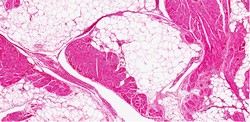Molecular aetiology of cardiac hypertrophy
Cardiac hypertrophy entails the enlargement and thickening of the heart walls, which may be beneficial at first, permitting enhanced output. However, it can ultimately become deleterious and result in cardiomyopathy, heart failure, and sudden death. Hypertrophic growth is down to the capacity of adult cardiac myocytes to respond to a variety of mitogenic stimuli that drive cell cycle progression. Recent work identified the CHAMP helicase as a key regulator in cardiomyocyte proliferation with anti-hypertrophic properties. CHAMP was shown to contain a conserved ATPase motif characteristic of RNA helicase superfamilies and interacts with cell cycle inhibitors. However, very little is known regarding the molecular mechanism by which RNA helicases regulate translation. The primary objective of the EU-funded CHAMP RNA HELICASE (Function, mechanism, and regulation of mammalian Mov10L1 RNA helicase) project was to decipher the molecular mechanism of CHAMP and its structure-function relationship. Researchers were particularly interested in the specific and nonspecific RNA substrates that activate CHAMP to mediate its RNA remodelling function. Research activities utilised state of the art molecular biochemistry and biophysics approaches and focused on the regulation of genes essential for heart development during prenatal and postnatal stages. In addition, scientists elucidated the role of CHAMP in RNA metabolism in the cell. Results indicate that it most likely regulated its target RNA at the level of translation and degradation. From a translational perspective, these findings suggest that CHAMP regulates the mRNA of cell cycle inhibitors in the postnatal stages of heart development. Apart from fundamental knowledge on the regulatory mechanism of cardiomyocyte hypertrophy, the results indicate that CHAMP could function as a therapeutic target against cardiac hypertrophy with significant clinical implications.







